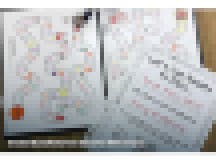Teachers and administrators don't always see eye to eye, but a recent report from Teachers Pay Teachers (TpT) shows they're aligned on one very important point: differentiation is essential for student achievement.
Survey respondents included 601 teachers and 206 principals. Of those, 95 percent of teachers and 100 percent of administrators agreed that differentiation is an important instructional strategy.
And it's widely-used, with 98 percent of teachers saying they differentiate weekly and 53 percent differentiating daily. Adding to those positive results, 86 percent of teachers say differentiation is either extremely or very effective, and 89 percent of principals report the same.
A well-used strategy that teachers and principals agree is important and impactful—winner winner chicken dinner, right? Unfortunately, it's not that simple.
No One Said It Would Be Easy
Teachers report two significant barriers to differentiation: lack of time and insufficient resources.
But that's not all; teachers say there are additional roadblocks:
- limited access to differentiated materials
- no time to collaborate
- difficulty creating resources
- ineffective training/PD

And these responses aren’t novel. According to a report by the Fordham Institute, 83 percent of teachers in the U.S. reported that differentiation is "somewhat" or "very" difficult to implement. Finding resources and planning ways to differentiate in classrooms that are often filled to the brim with students is just plain hard.
Rachel Lynette, a curriculum developer and former K-8 gifted education teacher, captures the dichotomy perfectly.
"Differentiation is so important, and yet, it's a lot to ask of a classroom teacher who's already so overwhelmed," says Lynette. "To say to a teacher, 'On top of paperwork, meetings, expectations and IEPs, you also need to develop lesson extensions for low performers and higher performers and maybe even ELL students,' it's too much."

Making It Work
Difficult as it may be, teachers persist.
"If we don't differentiate, no one is going to learn anything, except the swath of kids that happen to hit the middle," says Lynette. "The kids that just aren't getting it and end up at the bottom of the class eventually may quit school because it's so hard and humiliating. The gifted kids that are bored miss out on perhaps becoming a writer who writes the next American novel."
That sentiment is what pushes educators to challenge students at their level, gives them ownership in their learning and provides lessons and activities that fit their interests and background.
The TpT report uncovers a few approaches to differentiation that teachers find most effective:
- 88 percent use individual or small group instruction
- 76 percent provide lessons at varying degrees of difficulty
- 65 percent offer scaffolded lessons or activities

Differentiation Goodies: Practical Resources and Unique Approaches
And of course, as educators tend to do, many have found resources and strategies that make the work less taxing.
TpT’s report found that 98 percent of the teachers who completed the survey use TpT to differentiate at least once a month, 67 percent at least once a week.
And remember the teachers’ top three most effective approaches to differentiation? According to Melissa Fredericks, Education Research Specialist from TpT, the report found that TpT resources are often used to support the very same:
- 71 percent for leveled activities
- 66 percent for individual/small group instruction
- 48 percent for scaffolded lessons

Dig Deeper Without Getting Overwhelmed
LaNesha Tabb, a teacher in Indiana's Metropolitan School District of Lawrence Township, has been teaching kindergarten to grade two for 11 years. She uses TpT's resources but also creates tools that support her unique approach to differentiation, an approach she says saves loads of time.
"Instead of the usual strategy of moving students on to new skills once they've mastered something," explains Tabb, "I keep my kids on the same skills, but ask them to go deeper."
"Some primary teachers think, if students already know their letters, then they've got to move on to sounds, and then on to words. That's how you end up managing three to four different sets of lesson plans."
Staying on the letters and sounds example, students still learning those skills will do an appropriate but lower cognitive level activity, such as matching a picture with a letter. For students who are ready to move on, Tabb takes the taxonomy of the task into consideration, asking "How can I get them to take that exact skill and apply it at a higher cognitive level (comprehension, analysis or knowledge utilization)?" Sometimes that means sorting or building exercises, but it can also mean asking students to create a game that teaches other students letters and sounds, helping push students to analyze and use the knowledge they have.

Stop the "Soul-Crushing" Worksheets
Jump back to Lynette, who worked with gifted students for years. She says differentiating goes both ways. "You need to support struggling students, but also challenge gifted kids." More of the same is not the answer. “‘You finished this worksheet? Here's another one just like it.’ Or ‘Help Timmy because he's struggling.’ That's not differentiation," she explains. Instead, students need their own challenges, to go deeper into the topic or follow their own interests.
In a language arts lesson, for example, Lynette would give gifted students choices for how they can explore a book further. That might be a journal written from a main character's perspective, creating a new character and outlining how that addition would change the story or writing a new ending. These could be projects done using a computer, a worksheet or even by creating a hanging book report mobile.
Lynette who creates resources for teacherspayteachers.com, says one of her most popular resources for differentiating naturally is I ♥ Paragraph Writing because, within the structure provided, each student can write at his or her own level. She’s also created task cards that she says are ideal for differentiation. Students who are struggling with math word problems could complete a few task cards instead of facing, what Lynette calls "a soul-crushing sheet full of story problems." They can also answer questions verbally, or only use cards with multiple choice answers. Task cards can also be used in games, which is a great way to motivate reluctant learners.

This all adds up to TpT being a place where teachers can turn for support with challenges they face in the classroom, particularly when it comes to differentiation. As Fredericks explains, “I think this is an awesome opportunity for us to acknowledge and celebrate the expertise of our teacher-authors who are creating these wonderful resources. Teachers are working to make differentiation more plausible and less time-consuming, and we’re happy to be a platform for that support."



